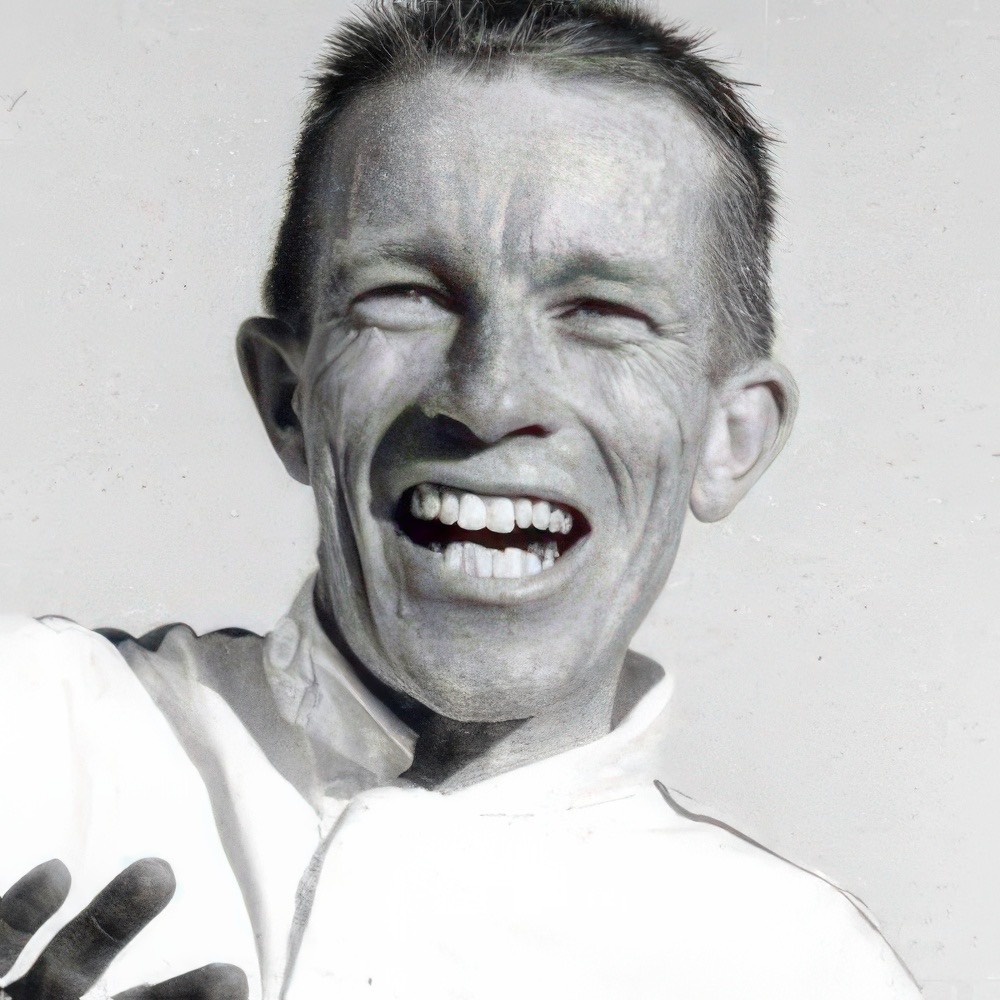
Richie Ginther
Career Statistics
Biography
Paul Richard 'Richie' Ginther (5 August 1930 - 20 September 1989) was an American racing driver who competed in 52 Formula One World Championship Grands Prix between 1960 and 1967, achieving one victory, 14 podiums, and 107 championship points while driving for Ferrari, BRM, Honda, and Eagle, with his greatest achievement being his victory at the 1965 Mexican Grand Prix driving for Honda, which gave both Honda and tire manufacturer Goodyear their first Formula One victories and demonstrated Ginther's exceptional abilities as a test and development driver who could translate technical feedback into competitive performance, before dying of a heart attack while on vacation in France in 1989. Born in Hollywood, California, on 5 August 1930, Ginther grew up in southern California during the golden age of American hot rod culture, and his brother's friendship with Phil Hill—who would become America's first Formula One World Champion—provided Ginther's introduction to serious motorsport and set him on the path that would lead to Formula One.
Ginther began racing sports cars in California during the 1950s, and his smooth driving style, technical understanding, and ability to provide detailed feedback to mechanics made him valuable to teams beyond his speed alone, and he developed a reputation as an exceptionally cerebral driver who approached racing as an engineering problem to be solved rather than merely a test of courage. His Formula One debut came at the 1960 Monaco Grand Prix driving for Ferrari, replacing the injured Cliff Allison, and he remained with the Italian team through 1961, learning from team leader Phil Hill and establishing himself as a solid number two driver who could score consistent points without threatening his more famous teammate.
On 14 May 1961, Ginther finished second to Stirling Moss at the Monaco Grand Prix, crossing the line just 3.6 seconds behind after a race-long battle, demonstrating that he possessed world-class speed when provided with competitive equipment, and this result established him as more than merely a good test driver but as a genuine racing talent capable of challenging for victories. In 1962, Ginther switched to the British-based BRM team to partner Graham Hill, and the move proved successful as BRM's P57 and later P261 chassis were competitive for race wins, and Ginther's technical feedback helped BRM develop their cars while his consistent point-scoring supported Hill's championship challenges.
The 1963 season brought Ginther his best World Championship result when he finished equal-second in the standings alongside teammate Graham Hill, both drivers amassing 29 points behind champion Jim Clark's dominant 54, and while Ginther won no races that season, his six podium finishes demonstrated remarkable consistency and established him as one of Formula One's elite drivers even if ultimate success eluded him. For 1965, Ginther accepted an invitation to join Honda's Formula One team, and while this meant leaving the competitive BRM operation for an unproven manufacturer with an underdeveloped car, Ginther's reputation as an excellent test and development driver made him the perfect choice for Honda's ambitious Formula One program, and he committed to helping the Japanese manufacturer develop their RA272 chassis into a race-winning machine.
The 1965 season was largely frustrating for Ginther and Honda, as reliability problems and lack of competitiveness left them struggling in the midfield, but the team worked methodically to improve the car throughout the year, and as the season progressed to its final races, the Honda became increasingly competitive. At the 1965 Mexican Grand Prix at the high-altitude Magdalena Mixhuca circuit on 24 October 1965, Ginther drove one of the greatest races of his career, qualifying fourth and battling with Dan Gurney's Brabham for the lead throughout the race before ultimately winning by just 2.9 seconds, giving Honda their first Formula One victory in only their second season and simultaneously giving Goodyear their first Formula One win, making the race a historic milestone for both the Japanese manufacturer and the American tire company.
Ginther remained with Honda for 1966, but the team struggled with the new 3.0-liter engine regulations, and despite Ginther's technical input and development work, Honda's RA273 lacked competitiveness, and he achieved no podiums across the season, making it clear that Honda needed more time to develop competitive machinery. For 1967, Ginther signed with the Eagle F1 team—the American constructor founded by Dan Gurney—and he competed in the Race of Champions at Brands Hatch, but his final Formula One entry was at the 1967 Monaco Grand Prix where he failed to qualify, and after this disappointment, he retired from Formula One at age 36, ending a seven-season Grand Prix career. After leaving Formula One, Ginther largely withdrew from motorsport and public life, settling in France where he lived quietly for two decades, and on 20 September 1989, while on vacation with his family in France, Ginther suffered a fatal heart attack at age 59, dying suddenly and unexpectedly, and his death received little attention despite his significant achievements in Formula One, as he had been retired for 22 years and his name had faded from public consciousness.
Richie Ginther's legacy in Formula One is that of an exceptionally talented and technically sophisticated driver whose one victory and 14 podiums across seven seasons demonstrated genuine world-class ability, and his reputation as Formula One's premier test and development driver made him invaluable to every team he drove for, as his ability to articulate what a racing car needed to go faster helped Ferrari, BRM, and Honda develop competitive machinery, and his victory at Mexico 1965 that gave Honda their first Formula One win remains one of the sport's significant historic milestones that demonstrated Japanese manufacturers could compete successfully in Grand Prix racing, paving the way for Honda's later dominance in Formula One during the 1980s and 1990s.